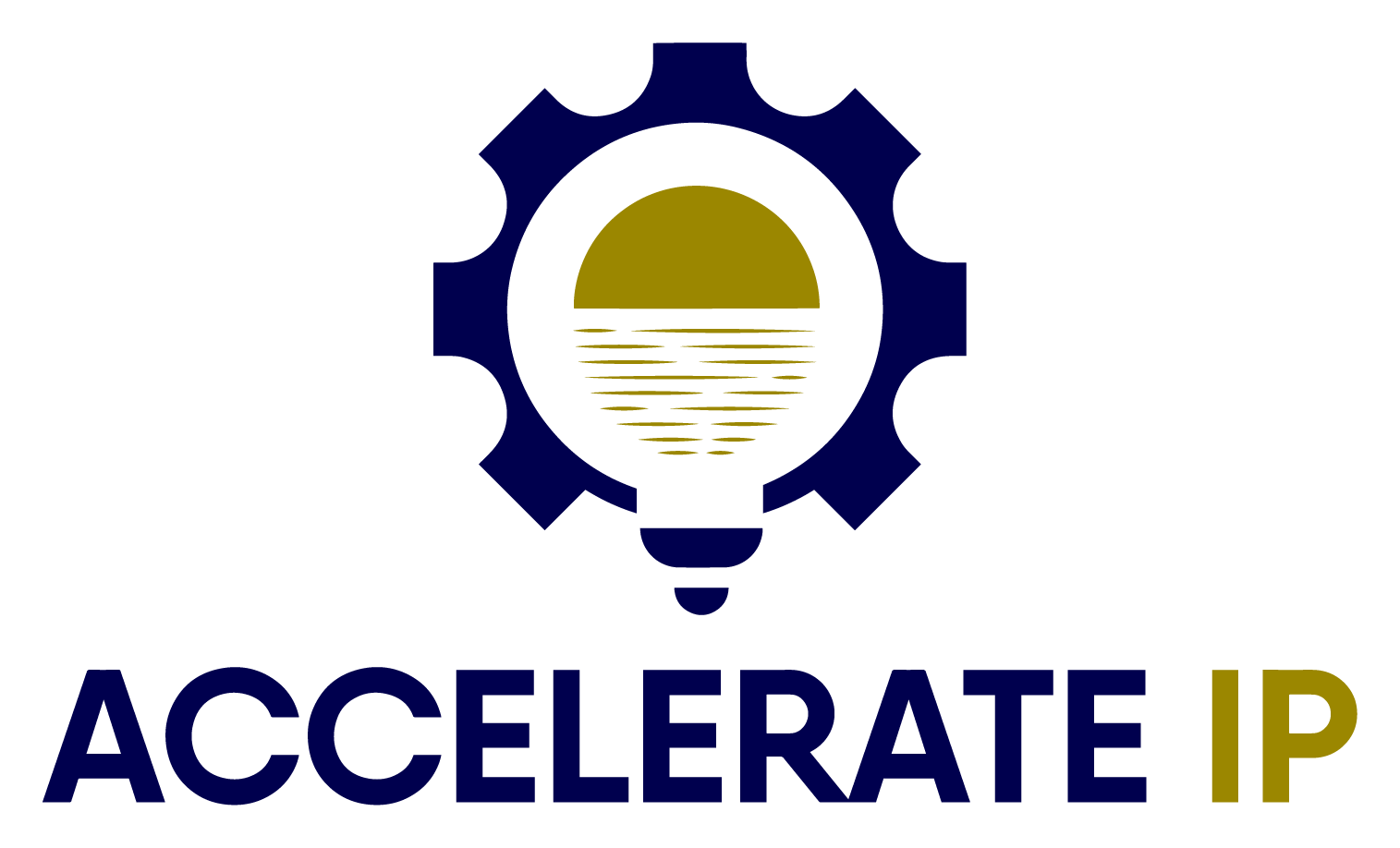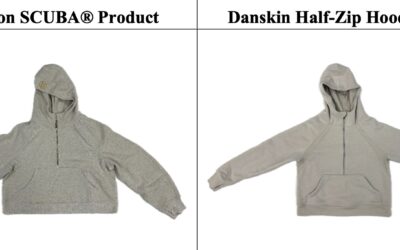Lululemon has filed a comprehensive federal lawsuit against Costco, alleging the retail giant violated multiple...
Patent protection
Patents are a limited-term, legal monopoly on the invention claimed in the patent. A patent allows you to exclude any other party from making, using, selling, offering to sell, or importing the claimed invention. Patents are determined on a country-by-country basis – a patent in the United States will not allow you to prevent any activity outside of the United States.
Two main types of patents – utility and design
Utility patents protect the functional aspects of any new (or improved) and useful process, machine, article of manufacture or composition of matter.
Design patents protects the visual, ornamental aspects of a new, original design for an article of manufacture.
| Utility Patent | Design Patent | |||
| Protects | How it works | How it looks | ||
| Attorney’s fees for initial filing | more than $6,000 (for nonprovisional) | less than $1,000 | ||
| Total cost (for small entity) | >$10,000 | $2,000 to $4,000 | ||
| Allowance rate / Office Action rejections | 90% rejection (OA) | 84% allowance | ||
| followed by 50% chance of 2nd Office Action | (7 out of 8 allowed) | |||
| How long does it take? (average pendency to issuance or abandonment) | 33 months | 20 months | ||
| Patent term | 20 years from filing | 15 years from issue | ||
| How to determine infringement | Compare claims – does the accused product include every element in the claim? (if any single element is missing, there is no infringement) | Compare drawings – would an ordinary observer be deceived to purchase one supposing it to be the other? |
Provisional patent applications
Utility patents are expensive. Provisional patents were designed to provide inventors with a more economical way to protect their inventions while they continue development. Provisional patent applications do not have the strict formatting and content requirements of a normal (nonprovisional) application. A provisional patent application establishes a U.S. filing date for your invention that can be claimed in a later filed nonprovisional application. You can describe your product as “patent pending” upon filing either a provisional or nonprovisional patent application.
To take advantage of the filing date of your provisional application, you must file a nonprovisional application claiming priority back to the provisional application within 12 months of the filing date of the provisional application.
While provisional applications have no formatting requirements, there are still good and bad provisional patent applications. To get the filing date of the provisional application, the claimed invention must be described in your provisional application with enough detail to allow a “person having ordinary skill in the art” of the invention to make and use the claimed invention without “undue experimentation.”
Nonprovisional patent applications
Nonprovisional patent applications have very strict formatting and content requirements. Nonprovisional patent applications require:
- A specification, including
- A title of the invention
- A background of the invention
- A brief summary of the invention
- A brief description of the drawings
- A detailed description of the invention
- A claim or claims
- An abstract of the disclosure
- Drawings
Patent claims – the single most important part of a patent
The purpose of the claims is particularly point out and distinctly claim the subject matter which an inventor regards as the invention. There are several conventions and rules that have grown out of the requirement to “particularly” and “distinctly” claim the invention, and a patent’s claims are the most difficult part of the patent to draft (and read). Claim 1 from the first patent issued to Facebook is provided below to give you an idea of what patent claims might look like.
- A method comprising:
accessing a profile for a user stored in an electronic database;
presenting a first user interface to the user;
receiving a plurality of privacy setting selections provided by the user using the first user interface, wherein the privacy settings selections identify, for each of a plurality of different categories of information associated with the user, one or more other users who can access that category of information;
updating the profile associated with the user to incorporate the plurality of privacy setting selections;
generating, by a processor, a narrative explanation of which other users can access which categories of information based on the privacy settings selections, wherein generating the narrative explanation comprises, for one or more of the privacy settings selections, selecting a narrative explanation template based on the privacy settings selection, wherein the narrative explanation template comprises text that identifies a group of other users who can access a category of information about the user profile based on the privacy settings selection; and
providing the narrative explanation to the user associated with the profile in a second user interface after receiving the privacy setting selections provided using the first user interface.
Most of what we call “patent prosecution” is an evaluation by the patent examiner of the claims to ensure that they are eligible for patenting. The challenge in drafting a patent claim is to describe the invention as broadly as possible while distinguishing the invention over the prior art and satisfying all of the rules and conventions of patent drafting. “Prior art” means all information that has been made available to the public before the filing date of the patent.
Patent Prosecution
Provisional patent applications serve as a placeholder to give a filing date to a later filed nonprovisional patent application. Nothing is done with a provisional patent application unless a nonprovisional patent application is filed claiming priority to the provisional. It essentially goes into a vault and waits to get called into service by a nonprovisional claiming priority back to the filing date of the provisional.
When the nonprovisional application is filed, it goes into a queue to be examined by a patent examiner. The patent examiner serves as an advocate for the public to make sure that information generally stays in the public domain unless it meets all the requirements for patentability. The Examiner reads and understands the invention set forth in the specification, determines whether the application is adequate to define the metes and bounds of the claimed invention and determines the scope of the claims. The examiner then performs a search for existing technology relating to the claimed invention and issues a notice of allowance or an office action identifying and analyzing all issues pertinent to patentability of the claimed invention. The applicant has an opportunity to revise the application to overcome any issues identified and place the application in order for allowance. Decisions by patent examiners are reviewable by the Patent Trial and Appeal Board (PTAB).
Costs and timeline of the patent process
The typical range for the whole process from drafting the application to getting a patent issued is 30 to 48 months costing around $10-$25k over that period. If each step had a typical outcome in a typical timeframe, the process would take about 30 months and would cost about $10k with about $5,000 – $7,500 of that spent to get the nonprovisional application filed. Typical timeframes are broken down below.
Eighteen months after the first filing date of the application, the USPTO “promptly” publishes the application. A provisional application starts the clock ticking on the 18-month publishing period, but the application is only published if there is a nonprovisional application that claims priority back to the provisional application.
| Prosecution step | Typical Timeframe | Typical Cost |
| drafting the application (nonprovisional) | 2-8 weeks | $5,000 – $7500 |
| Provisional to nonprovisional conversion | 12 months | (included in typical cost of drafting the application) |
| Filing to first office action (typically a rejection) | ~21 months | – |
| Amendment in Response to Office Action (a typical prosecution will require one to three responses to Examiner Office Actions) | 1-6 months | $1,500 |
| Examiner Evaluation of amendment (resulting in notice of allowance or final office action) | ~3 months | – |
| Appeal to Patent Trial and Appeal Board | ~9 months | $10,000 |
| Average time from filing (nonprovisional) to issuance | 32 months | $10k-$25k |
The timeframes and costs associated apply to most cases. Outliers, though rare, can be extreme.
Utility patent infringement – evaluating every element of the claims
The claims precisely define the scope of the invention protected by a patent. The language of the claims sets out and defines one or more “elements” that make up the claimed invention. Infringement is determined by looking at the claims of the patent and comparing the accused product (or process) on an element-by-element basis to determine whether the accused product (or process) includes every element of the claimed invention. If every element (not most elements, every element) of the claim is found in the accused product (or process), then the claim is infringed. If any element is missing from the accused product (or process), the claim is not infringed.
Patent infringement can lead to liability for damages (usually a reasonable royalty, but may also include lost profits or other damages), or an injunction prohibiting any continuing infringing activity.
International Patenting
There isn’t any such thing as an “international patent,” but there are two institutions that allow patentees to obtain patent protection more easily in multiple countries. It’s usually one of these institutions that people are referring to when they talk about “international” patenting: The Patent Cooperation Treaty (PCT) application process and the European Patent Organization (EPO).
With very limited exceptions, patent rights are determined on a country-by-country basis with different processes and rules governing every country. Most countries, however, look to information publicly available anywhere in the world when establishing the “state of the art” or what is “prior art” when they are evaluating whether an invention to be patent is “new” compared to the prior art. Most countries will allow patentees to file an application in the country claiming priority to a foreign application, but only if the foreign application was filed within a limited period, typically 12 months. This means that if you file a patent application in the U.S. and file an application for a patent in another country 14 months later, your own patent application may be cited as prior art that will prevent you from obtaining patent protection in the foreign jurisdiction.
The Patent Cooperation Treaty
The PCT provides a uniform process for patentees to seek patent protection in multiple countries. Applicants file an application meeting the criteria and standards of a PCT application in a designated office (the USPTO is one) and an international search report is provided for the PCT application. The patentee is then allowed 18 months from the filing date of the PCT application to file that same application (or a certified translation of it) in the patent office of any country that is a signatory to the treaty (most countries, and all the “major” countries are signatories). The application must be prosecuted and evaluated by the national office of each country in which patent protection is sought, and the costs add up quickly, but the process is greatly streamlined compared to preparing and filing a separate application for each country.
The European Patent Office
The EPO is the closest thing to an international patent that currently exists but thinking of a “European Patent” as equivalent to a national patent through all of Europe still isn’t quite right. The EPO allows applicants to go through a single application and prosecution procedure to be issued a European patent. The European patent must still be validated by each individual country to have the same effect as a “classical” nationally enforceable patent in that country. Validation typically requires a filing fee and in some cases a translation to be filed in each country in which the patent is to be validated within three months of the publication of the grant of the European patent. The 39 contracting states to the EPO are: Albania, Austria, Belgium, Bulgaria, Cyprus, Croatia, Czech Republic, Denmark, Estonia, Finland, Former Yugoslav Republic of Macedonia, France, Germany, Greece, Hungary, Iceland, Ireland, Italy, Latvia, Liechtenstein, Lithuania, Luxembourg, Malta, Monaco, Montenegro, Netherlands, Norway, Poland, Portugal, Romania, San Marino, Serbia, Slovakia, Slovenia, Spain, Sweden, Switzerland, Turkey and United Kingdom.
International Patenting – Part II
The largest markets in the world are in India and China and we frequently receive questions from clients wondering if they should file for a patent in these or other populous countries. The answer, as always, is “it depends,” but the main factor that should be evaluated when determining whether to file an application for a patent in a given jurisdiction is whether that patent can be practically enforced against infringement.
We offer flat fee services for all of your business legal services. Contact us now for your flat fee service.
Reach out to us to Start protecting your invention now!
Don’t just take our word for it. Read what our clients have to say about our services:
Follow Us
Contact Us

Schedule Complimentary Consultation
Latest News & Blog Posts
Disney and Universal Sue AI Company Midjourney for Copyright Theft
Disney & Universal launch groundbreaking lawsuit against AI company Midjourney for copyright infringement. $20M+ case could reshape AI industry forever.
Legal Issues Emerge Over Trump’s LA Troop Deployment as California Responds
When can the President deploy military forces in U.S. cities? Explore the legal framework behind domestic troop deployment, including the Insurrection Act, constitutional powers, and historical precedents like the 1957 Little Rock Crisis. Understanding the complex web of authorities, limitations, and checks that govern presidential emergency powers in our federal system.



